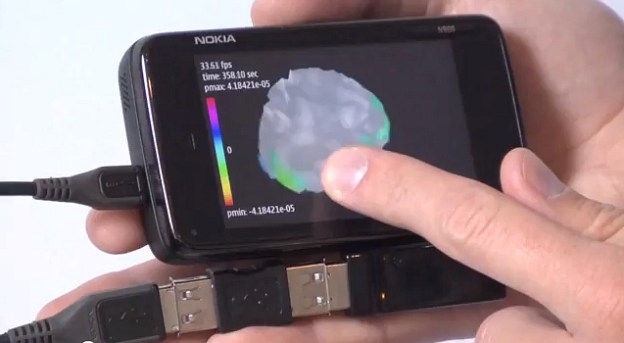 Ever wondered what’s going on inside that space between your ears? Well, wonder no more – an app that scans your brain and monitors its electrical activity has been created by Jakob Eg Larsen and his team at the Technical University of Denmark.
Ever wondered what’s going on inside that space between your ears? Well, wonder no more – an app that scans your brain and monitors its electrical activity has been created by Jakob Eg Larsen and his team at the Technical University of Denmark.
At present it works on the Nokia N900 smartphone and requires only a small, commercially available electroencephalogram (EEG) headset, making it portable enough to monitor neural signals while at home, in the office, or even at a sports match.
But why would anyone want to do that, you may ask. The idea is that it could, for example, be used to monitor those with conditions such as epilepsy, attention-deficit hyperactivity disorder and addiction, without the need for a hospital visit.
All you do is simply plop the headset on your head and fire up the app. The smartphone’s screen then presents the user with a simplified 3D model of the brain. The image will then light up and provide data as it detects activity in your gray matter.
The 3D image of the brain can be rotated by swiping the screen. The app can even be hooked up to a remote server to transfer information if calculations too large for the capability of the smartphone need to be made.
“Traditionally, in order to do these kind of EEG measurements you have big lab set-ups that are really expensive,” said the app’s creator, Jakob Eg Larsen. “You have to bring people in, isolate them and give them specific tasks.” Not so with Larsen’s app.
One of Larsen’s colleagues, Arkadiusz Stopczynski, said of their creation: “It’s much better than going to the lab, sitting there for one hour of EEG and going home.”
According to Larsen, this is the first time a phone has had the capability of providing the power for an EEG headset. While it may not have the computing power of hospital-based brain scanning machines, it could one day become a useful tool for those working in the field of neurology, as well as a fun app for anyone interested in what’s happening up top.
[Via New Scientist]



